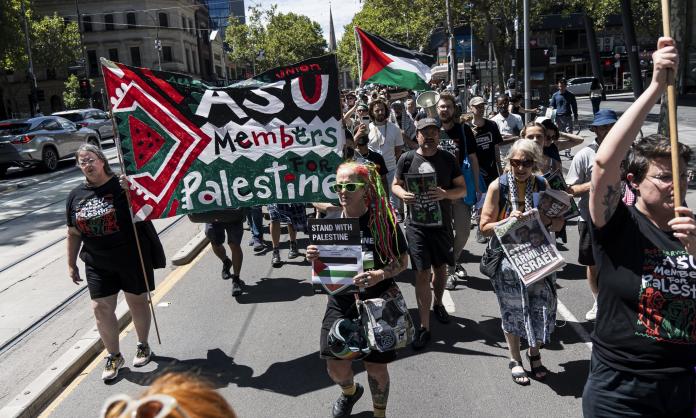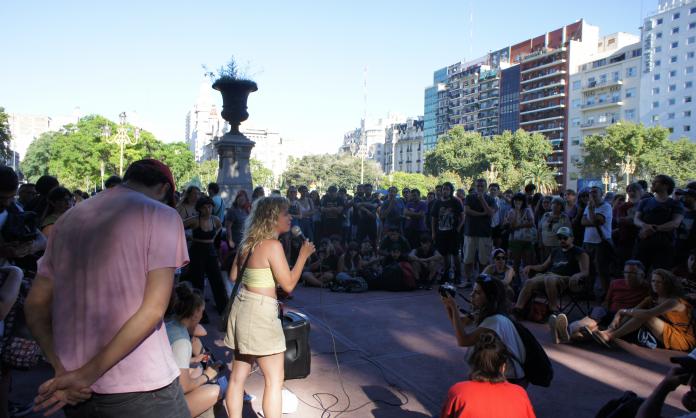There has been a vigorous argument over the direction of the National Tertiary Education Union (NTEU) industrial campaign at Sydney University this year. Most recently, those who have been reluctant to argue and organise seriously for frequent enough and long enough strikes are now leading the charge for a “smarter” strategy of administration bans.
This has involved spending time on a new ballot for industrial action to approve the bans, at a time when every effort should be going into building for an upcoming 48-hour strike on 13-14 October. Instead of rushing to ballot for bans, the union should be organising more strike action before the semester ends and students leave the campus, weakening the industrial strength of teaching staff in particular.
Events at Swinburne University of Technology in Melbourne last month indicate the pitfalls of a strategy of bans instead of strikes. There, management stood down without pay unionists who had placed bans on some aspects of their work as part of a campaign to improve wages and conditions.
NTEU and Australian Education Union (AEU) TAFE members at Swinburne have been campaigning for a decent pay rise and superannuation, in line with their fellow Swinburne workers, for almost two years.
Management’s response has been to offer vocational staff an annual pay rise of either 3.25 percent with 15 percent superannuation, or 3.5 percent with 12 percent super. With inflation running at 6.1 per cent, and the Reserve Bank predicting that it will continue to rise, these offers amount to large pay cuts.
In return for such pay cuts, management wants workers to accept work intensification, the removal of annual leave loading and limits on opportunities for (the very large number of) casual and fixed-term workers to convert to fixed-term or ongoing employment.
The dispute has dragged on with the outcome only getting worse for Swinburne staff.
As part of their response to management’s insulting offer, TAFE teachers working at the university’s three campuses imposed limited work bans. The bans include not doing extra duties on top of those set out in the job position description, not recording student attendance, not attending meetings and not using online systems.
The implementation of work bans is a lawful action, but the university is refusing to pay the staff who are implementing the bans anything at all until the bans are lifted. Current industrial laws allow management to dock the pay of workers engaged in bans, even docking up to 100 percent of pay in response to minor bans. It’s then up to the union to haggle in court over what percentage of pay can be deducted—a process that can result in a major loss of campaign momentum. That is exactly what both the NTEU Victorian Division and the AEU Victorian branch are now doing.
The situation at Swinburne shows the weakness of a union strategy focused on bans. It places the burden of the action on a minority of union members. And it gives management the opportunity to take the initiative by victimising and refusing to pay the workers imposing bans.
To maintain bans, individual workers have to withstand pressure of various sorts from management pushing for the bans to be lifted. Especially where union density is low, this can mean particular workers are isolated, targeted and threatened.
By contrast, a strike that unites different sections of the workforce gives a much greater sense of solidarity and strength. Collective action that involves thousands of staff empowers workers to participate without fear of scapegoating.
The campaign for better pay, conditions and job security at Sydney University this year has been much stronger than at any other university, precisely because it has been focused on strike action.
It started with a 48-hour strike, followed by a 24-hour strike in May and another 24-hour strike in August. There will be another 48-hour strike on 13 and 14 October. The strikes have been very successful, with well attended picket lines and the union branch has recruited new members as a result.
In this case, as often in the past, a bans strategy doesn’t represent an escalation, or a smarter strategy, but a retreat from the sort of action that can win—especially in the few remaining weeks of semester.
Pushing to escalate strikes—to make them more frequent, more effective, and even open-ended—is not always an easy argument. To involve wider layers of the workforce in striking and picketing is a massive organising task. But building industrial power is never easy. There are no shortcuts.









